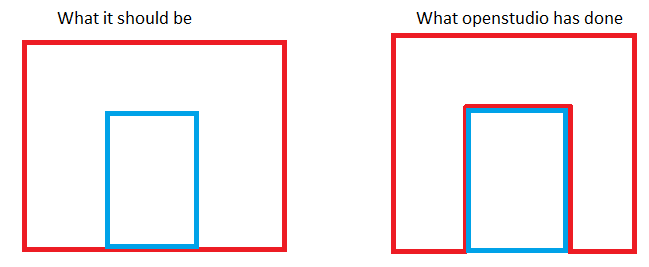First time here? Check out the Help page!
 | 1 | initial version |
Yeah, this is a thing that happens annoyingly often. Normally the simplest solution, as you say, is to go back to an earlier version of your model.
Absent that, the first thing I'd do is to try opening the file in OpenStudio itself and see if you can view the geometry there - it can sometimes work when Sketchup doesn't. Second, open the OSM in notepad to check it actually has the information it should have - if it's been corrupted and you've just lost the data in the model then there obviously isn't much to do, but if it's there then it's probably a geometry drawing issue.
In my experience, this tends to be caused by windows and subsurfaces. In particular, OpenStudio has problems if you've got windows that share edges, or windows with one of their edges on the wall edge (most commonly the bottom edge).
What happens is that when it's drawing the surfaces, it gets confused and messes up the wall surface coordinates - if you look at the wall surface in notepad you might find that it has, say, 8 vertices instead of the 4 it's supposed to. What's happened is that OpenStudio has drawn the wall around the window, including the window vertices into itself like so:

Other areas I've found can be problematic are drawing complex roof geometry, copying and rotating zones, and moving/adjusting windows and walls. The last is a particular annoyance where the windows lose their wall reference and get orphaned because the name of the wall/window changed when you moved it.
My general solution in these cases is to manually edit the OSM file in notepad++. If the problem is the walls having too many coordinates due to windows, then I fix the walls by finding the surface in notepad and deleting the extra vertices (check the coordinates carefully so you don't delete the wrong ones). Then I get the windows away from the edge of the wall by, for instance, offsetting them by 10mm. Similarly, if you have a bunch of windows all abutting each other in a complicated arrangement it can help to separate them - I find T-intersections in subsurface edges tends to result in problems.
So yeah, my guess is that there's a bunch of walls with erroneous vertices, and if you can go through and find all the ones with too many vertices and clean them up it should hopefully work again.
